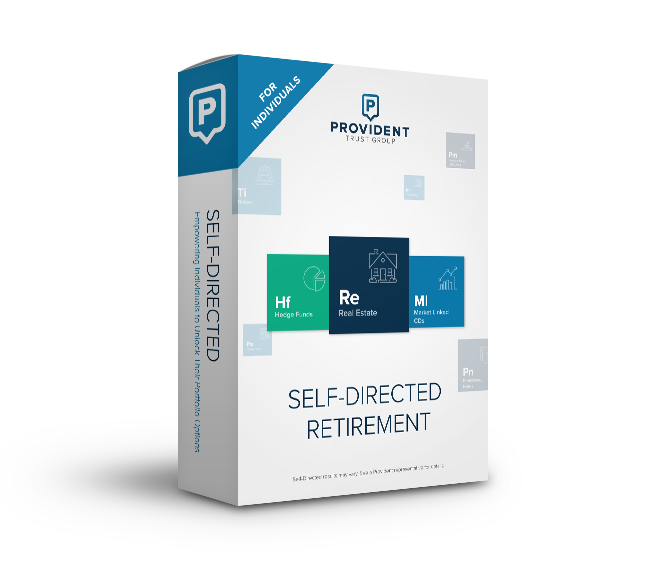Fast. Easy. Secure.
Our online account portal will walk you through the process, step by step.

Inherited IRA
A person who inherits their spouse’s IRA has a unique option; they can make the account their own. They would not have to establish an “Inherited IRA.” Instead, they could establish a normal Traditional IRA or Roth IRA depending on the account type of the original owner.
As a beneficiary, you cannot make additional, annual contributions to an Inherited IRA, but the funds and assets in the account can continue to remain tax-deferred or tax-fee in some cases. Generally, distributions from these types of accounts do not incur a tax penalty.
As with any other IRA, funds within the account can be invested to increase the value of the Inherited IRA, hopefully increasing your retirement savings. The only limitations on the investments made within an Inherited IRA are placed by the IRS and include a very limited number of items.
CONTINUED GROWTH
You can continue the retirement account’s tax-deferred growth and potentially avoid penalty on the income taken from the retirement account before the age of 59 1/2.
CONTINUED TAX PROTECTION
In a Traditional Inherited IRA, you will not pay taxes on the funds until you withdraw them.
NO EARLY WITHDRAWAL PENALTIES
You will not incur a 10 percent early withdrawal penalty on distributions, even if you are under age 59½.
TAXABLE EARNINGS
For a Roth Inherited IRA, only earnings are taxable if the account is less than five years old at the time of the account holder’s death.
NO ADDITIONAL CONTRIBUTIONS
Unable to make annual contributions to an Inherited IRA.
TRANSFER REQUIREMENTS
Can only transfer to another Inherited IRA, inherited from the same party.
REQUIRED DISTRIBUTIONS
Required Minimum Distributions (RMDs) are mandatory for Inherited IRAs.
NOTE: Please visit www.irs.gov for a complete breakdown of the rules and regulations concerning Traditional IRAs. Certain restrictions apply regarding prohibited transactions.
December 31 of the original account owner’s year of death:
If the account owner died on or after his or her required beginning date (RBD), the RMD for the year must be satisfied if it was not taken in full during the account owner’s lifetime.
December 31 of the year following the original account owner’s year of death:
If you are taking an RMD based on the life-expectancy method, distributions must begin by this date. If you are one of multiple beneficiaries, all beneficiaries must have established separate inherited IRA accounts by this date to calculate distributions based upon each beneficiary’s own life expectancy.
September 30 of the year following the original account owner’s year of death:
Important for determining the beneficiary whose life expectancy may be used to calculate the RMD (the designated beneficiary). If you’re one of multiple beneficiaries of varying ages, all beneficiaries must use the life expectancy factor of the oldest beneficiary who has not taken a lump-sum distribution or disclaimed his or her entire interest prior to this date. However, if all of the beneficiaries have established separate IRA accounts by December 31 of the year following the account owner’s death, then all beneficiaries may be able to use their own life expectancy factors to calculate their RMD. Check with your tax advisor to see if you are eligible for this benefit.
October 31 of the year following the account owner’s year of death:
Important if you are the trustee of a trust named as IRA beneficiary. The IRS mandates that trustees provide the fiduciary with a copy of the trust document or a summary list of the trust’s beneficiaries and conditions by this date. If this requirement is not met, or if the trust failed to meet certain other IRS requirements, it’s not considered a qualifying trust eligible for more favorable RMD calculations, usually based on the life-expectancy of the oldest trust beneficiary.
The Provident Advantage
Our approach focuses on delivering clear and concise information so you can make well-informed decisions regarding your investments. Our clients rely on our abilities to ensure every administrative and reporting detail is covered and completed on time.
IRS Required Reporting
Record Keeping
IRA & Qualified Plan Administration
Transfer Processing
Alternative Asset Custody
Rollover Assistance
Self-Directed Education
Contribution Processing
Distribution Processing
Your investment freedom is a click away
 OPEN AN ACCOUNT
OPEN AN ACCOUNT
Our completely electronic application process will have you set up in minutes.
 FUND YOUR ACCOUNT
FUND YOUR ACCOUNT
Transfer or Rollover old or non-performing retirement assets.
 START INVESTING
START INVESTING
Enjoy investment freedom with a truly self-directed retirement account.
Get started with your inherited ira application today.
Simply choose the type of IRA you’re looking for, complete the corresponding form, and remit it to us via email or mail.

